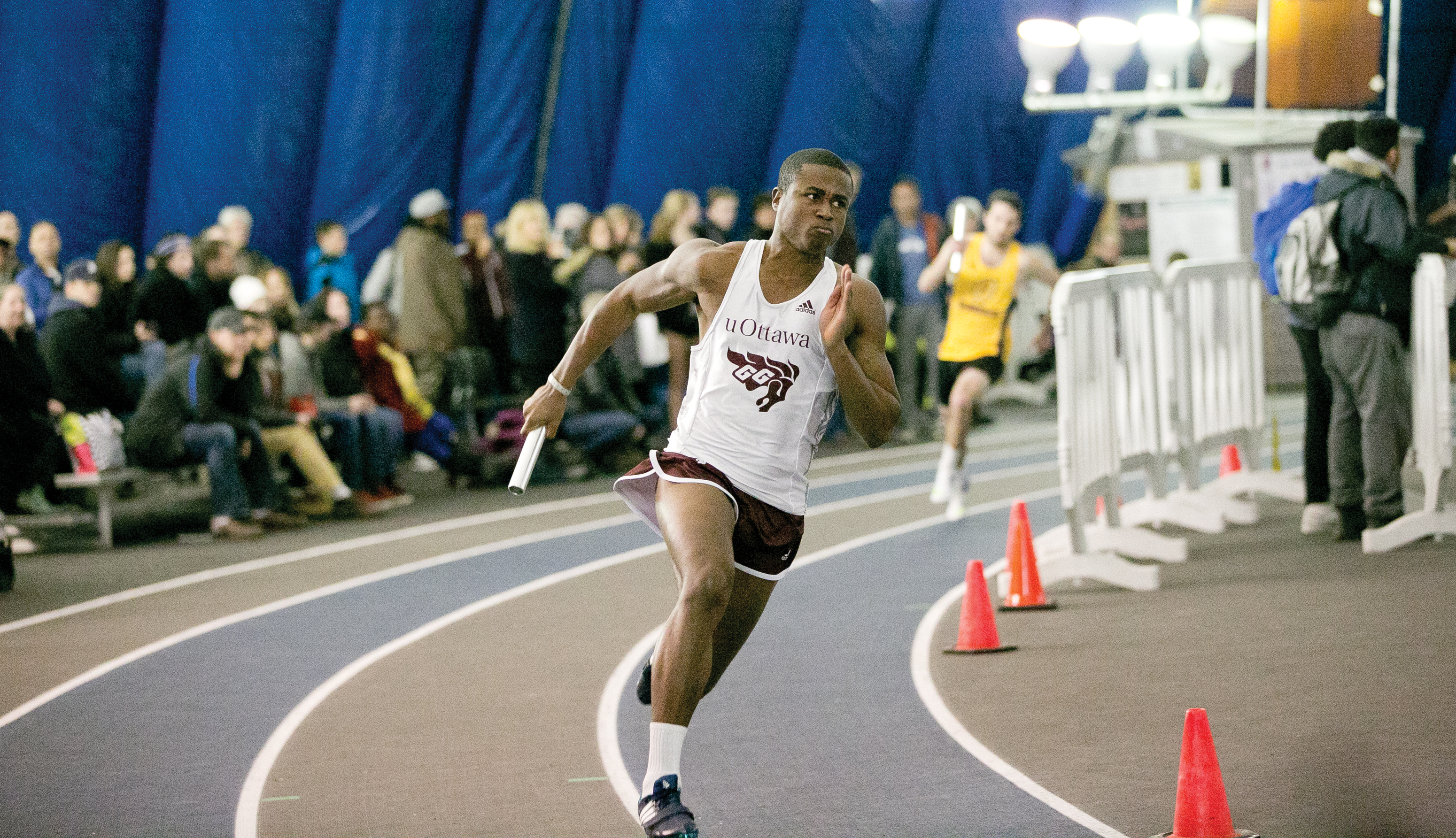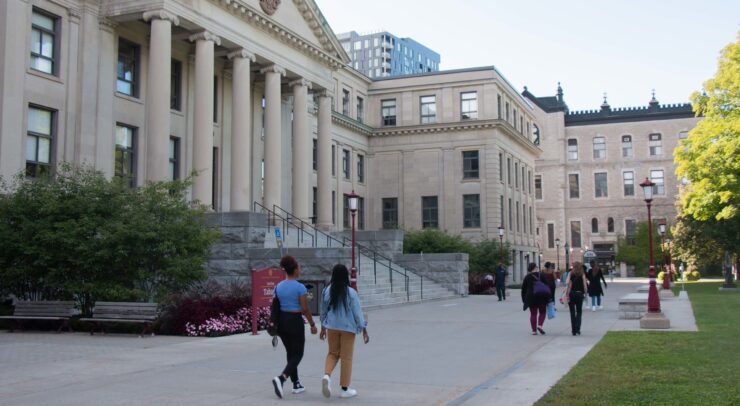Sprinter Brandyn Martineau speaks on his sport’s lack of visibility
The University of Ottawa currently has 10 official varsity programs, however the prominence and recognition given to each team on campus is far from equal, says U of O short-distance sprinter Brandyn Martineau. Martineau, has competed in 60m and 300m events at a varsity level for five years. He detailed some of his frustrations and achievements he’s experienced as a track athlete at the university.
“Over the past four years there’s been little to no coverage of the track and field because basically they cover the sports that bring in more revenue to the school.”
Much like with their Olympic counterparts, there isn’t a lot of interest afforded to track and field athletes. Many may be unaware that the Gee-Gees have some of the nation’s best training facilities for budding track and field athletes, and boast a coaching staff studded with Olympic caliber tutelage.
Head coach Andy McInnis, who has led the team for the past five years, has five Olympic appearances on his resume, including a stint as head coach for Canada at the 1996 Atlanta Summer Games. McInnis also has 10 world championships under his belt. Despite this, there seems to be a lack of coverage of the elite-level athletes within the U of O’s track and field program.
“They can sell tickets and make students come out to (other sports games), but track events are free and are technically hosted by the head coach, not the school. They treat it as if it’s a club sport,” said Martineau.
The Gees track and field team practice and host events far from campus at the Louis Riel Dome in Gloucester—a 50 minute bus ride away from the university. The school has announced no plans of providing the teams an on campus hom e in the near future. Martineau believes this also has a big impact on the track and field team’s popularity on campus.
“90 per cent of the school has no idea where we even train, because they don’t really see us doing what we do, so if it was closer it would be easier for people to see what we’re actually doing and maybe would be interested in coming to watch us,” he said.
The school currently rents the dome for practices that take place 5:30–9 p.m., but Martineau believes that this can cause issues as student athletes are forced to organize their lives around this time period.
“Many of us work part-time jobs but it’s hard because there just isn’t any time to relax. If you practice every day, you’re going to be exhausted every day, but then you still need to study for your courses and stay on top of them. Trying to find the equilibrium is tough,” said Martineau.
Despite the downfalls, the experience is still rewarding, Martineau commented on how his unique experience has taught him many important lessons to take with him in life.
He says that time management is the most important skill he’s learned during his time as a student-athlete.
“In track, you learn to be more of an individual in that you get what you put in. It helps you be a better student because, since your schedule is so tight, if you don’t manage (your time) properly, you’re not going to perform well in school or track.”
For Martineau, he expects to continue to train at a high level for the next few years of his life, but for others, the varsity track and field team represents the final stop of their athletic career.
Track and field may not get the shine it deserves on campus, but its athletes are dedicated, hard-working individuals who rightfully yearn for recognition from students and administration alike.
The lack of recognition likely won’t come to an end anytime soon, but one day the team may get what they deserve—a little support.





